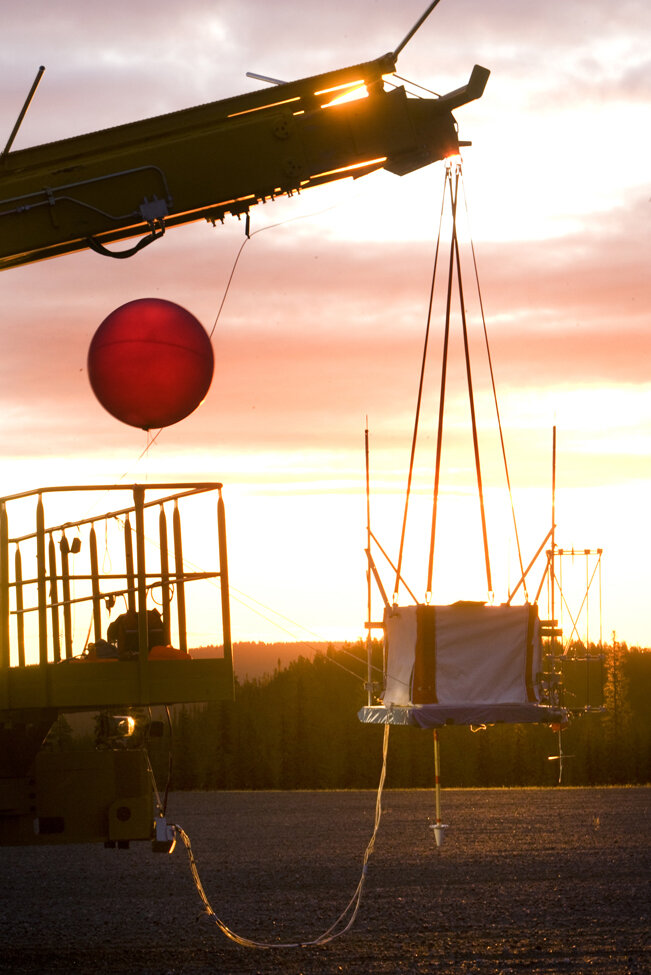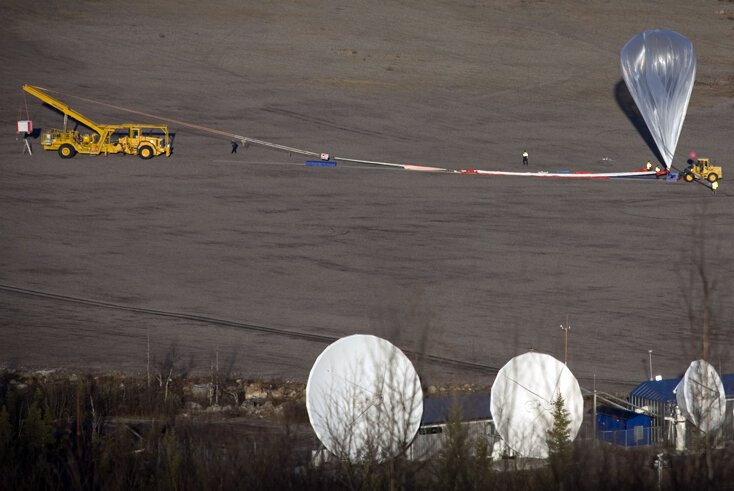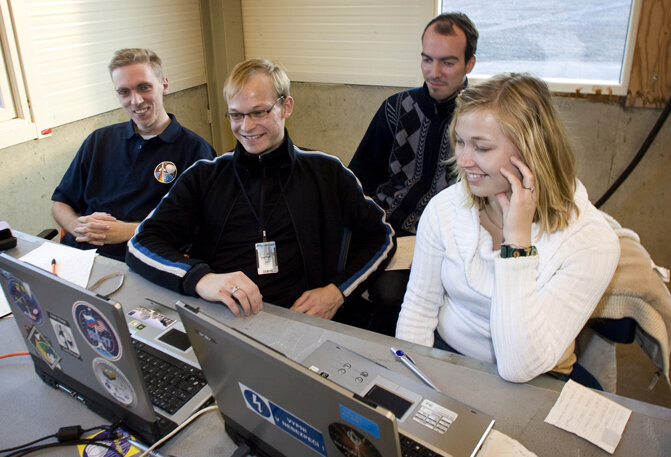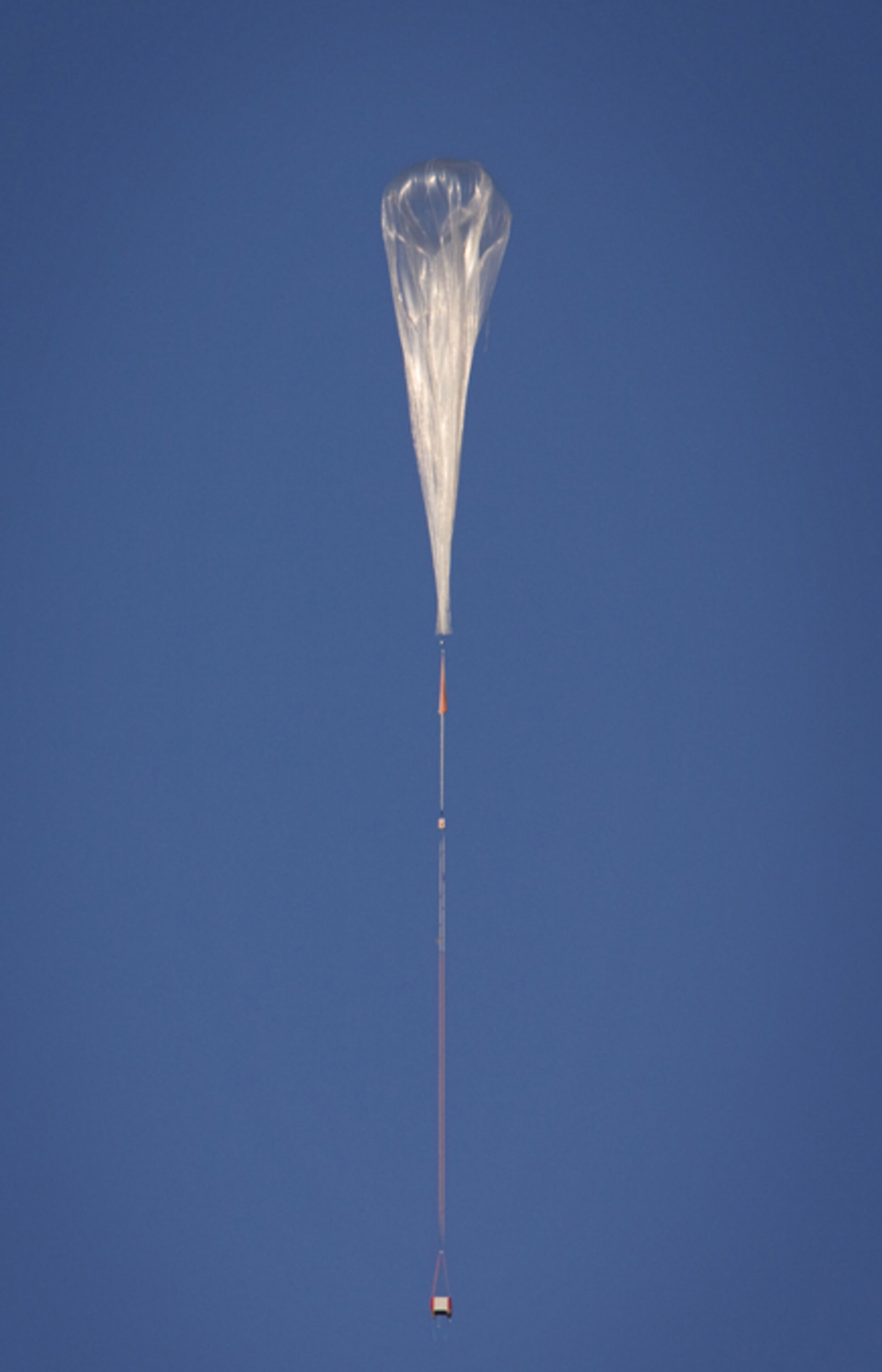Student experiments fly high on helium balloons
Four teams of students sponsored by ESA are jubilant after their experiments returned safely to Earth at the end of the latest Balloon Experiments for University Students (BEXUS) campaign inside the Arctic Circle. After many months of hard work and preparation, the successful conclusion was well worth waiting for.
The long-awaited lift-offs came when the launch teams at Kiruna, in northern Sweden, were able to take advantage of a break in the weather. At 05:30 on 8 October, a meeting was held between the Esrange team and BEXUS-6 experiment team leaders to discuss the launch prospects. The forecast predicted ground wind speeds below 5 m/s and little precipitation, so it was decided to go ahead with both launches in a single day.
By 08:15, the BEXUS 6 gondola had been moved to the launch position, the communication links had been tested, the experiments switched on and final pre-flight checks had been completed. Once the 10,000 cu. m. balloon had been inflated, it soared gently upward and began to drift toward the south east. 80 minutes after lift off, it reached the float altitude of 29 km, continuing its flight for just over one hour before the gondola was cut free and the parachute descent began. Touch down occurred at 12:15, just across the Finnish border.

Events continued to evolve rapidly. At 13:00, preparations at the balloon pad began for BEXUS-7. Over the next couple of hours, the gondola was moved to the launch position, final checks were completed and inflation of the 12,000 cu. m. helium balloon began. Lift off took place at 15:35, and once again the balloon completed a flawless flight, rising to a float altitude of 26 km and continuing serenely toward the south east until the payload was cut free at 19:00. The landing took place in Finland a few kilometres north of the village of Rovaniemi.
“All of the experiments on both balloons were safely retrieved by helicopter, loaded onto a truck and returned to the launch base at Kiruna,” said ESA co-ordinator Helen Page. “After the success of the missions, everyone was entitled to relax and enjoy a celebration party.”

On board the first balloon, BEXUS 6, were two experiments: LowCoINS (La Sapienza University of Rome), which was sponsored by ESA’s Education Office, and TURA, sponsored by DLR. BEXUS 7 carried three ESA-sponsored experiments – TimePiX (Luleå University of Technology, Sweden, Charles University, Prague, and Stratospheric Census (Luleå University of Technology, Sweden) and Aurora (University of Rome) – as well as a German experiment.
Two of the teams monitored their experiments throughout the flights and have been able to provide a preliminary overview of their results.
The TimePix team commented: “Telemetry was received throughout the ascent and float phases, and only cut out during descent at approximately 4 km. Over 5,000 frames of 5 second exposures were recorded and a clear increase in cosmic ray activity can be seen compared to ground-based readings. For our final report, the results will be correlated with the balloon flight profile and the magnetometer readings of the Aurora experiment.”

The Stratospheric Census team reported: “The experiment worked as expected and the commands to open and close the valves and pump air through the filter were received successfully. This means that the experiment should have collected samples only at stratospheric altitudes (above 12 km). The float phase was long enough to allow for a good sample to be taken so the team are hopeful for some interesting results. The filters will be removed under clean conditions and transported to the students' institute for analysis.”
A fifth ESA-sponsored experiment, known as Icarus, was removed before balloon inflation and did not fly on BEXUS. At experiment switch-on, it was found that the Icarus video feed was interfering with the balloon’s communication system. This was not picked up during the previous day’s radio frequency test and unfortunately there was not enough time to resolve the problem.




